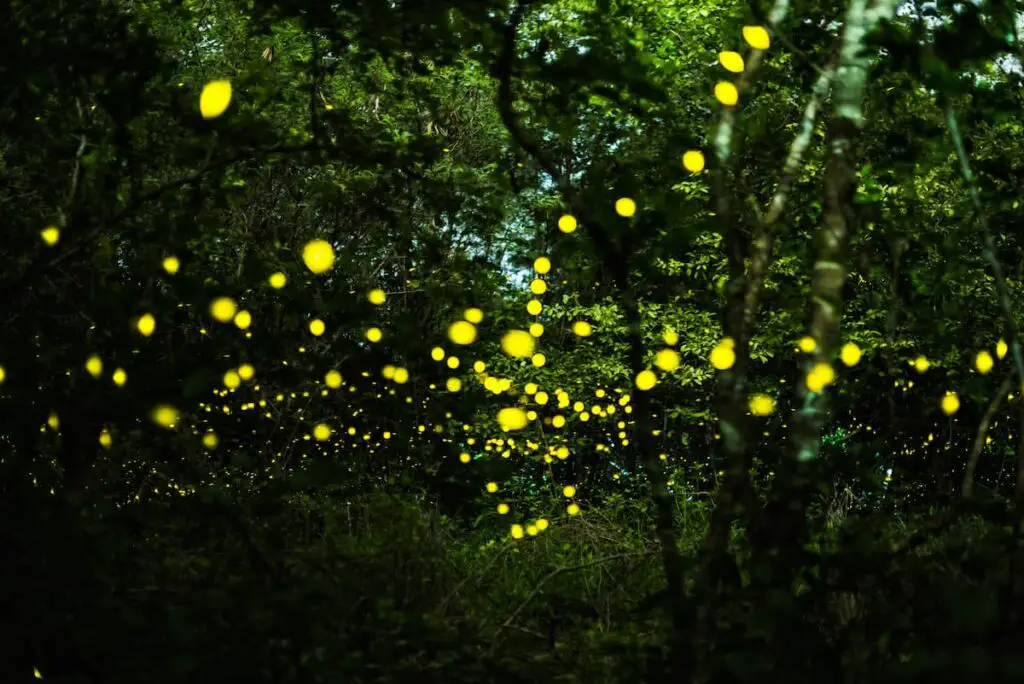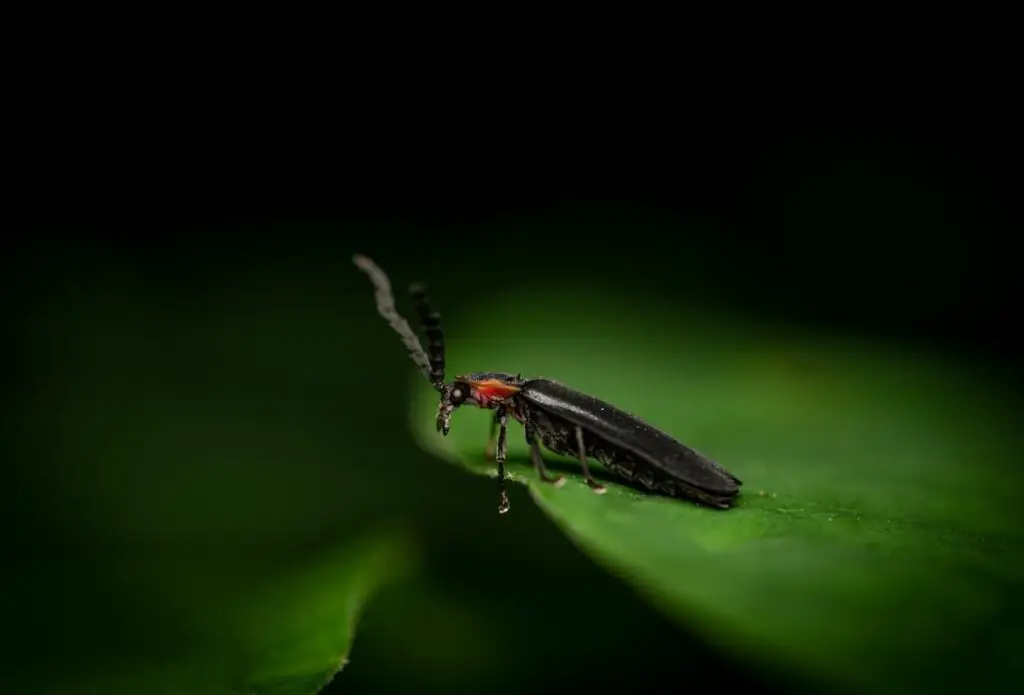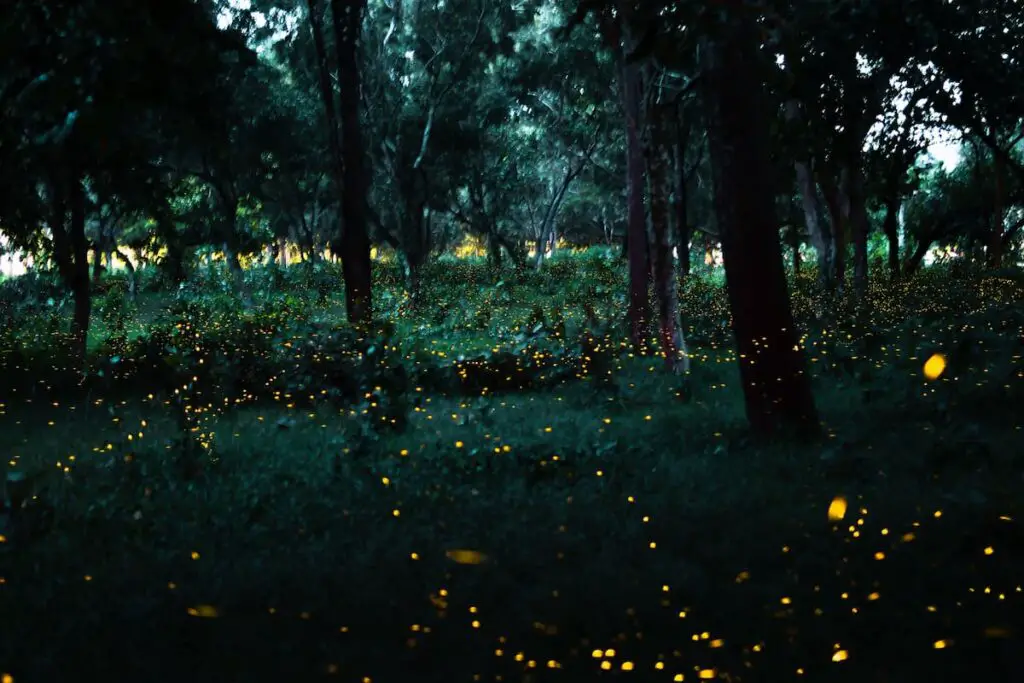As an Amazon Associate, we earn from qualifying purchases. We may also earn commissions if you purchase products from other retailers after clicking on a link from our site.
Fireflies are a particular type of beetle that can be found in many different parts of the world. In North America, they are often called lightning bugs, thanks to their glowing bodies that light up the night. However, did you know that certain weather conditions can make for the best firefly viewing?
The best weather for fireflies is warm but not hot. They thrive in humid conditions as well. The combination of warmth and moisture helps activate their glow and attract mates, favoring reproduction and survival.
Nothing says summertime the way catching fireflies on a warm summer night does. But if you don’t know the best weather conditions for them, you may miss out on the glowing show. Read on for tips on the best weather for firefly viewing.

What’s the Best Time To Catch Fireflies?
Several factors affect firefly activity, so it’s best to research them before planning a firefly-viewing outing. Here are some of the best times and conditions for spotting fireflies:
Fireflies Thrive in Warm Weather
As the weather starts warming up, many of us look forward to spending more time outdoors. However, we’re not the only ones who enjoy the warmer months. Fireflies also prefer warmth and are most active when temperatures exceed 50°F (10°C).
While you can see fireflies throughout the summer, you’re more likely to spot them during late spring and early summer. One reason for this is that muggy nights provide the perfect conditions for these delicate creatures.
The high humidity helps to keep their bodies moist, which is essential for survival. In addition, fireflies mate during this time, so you may see flashes in specific patterns as they communicate and search for a mate.
Rainy Days With Warm Nights Favor Fireflies
Rainy days may seem like they would put a damper on outdoor activities, but they can actually benefit fireflies. The rain helps keep the air and ground moist, creating the ideal habitat for fireflies.
Just make sure to wait until the temperature warms up again before heading out to search for fireflies. Cooler temperatures at night during rainy periods can inhibit their flashing behavior.
A weather app on your smartphone will help you stay on top of weather conditions and find the best time for watching fireflies. I’ve listed the best weather apps with alerts in a blog post. Check it out to find your perfect app! [Best Weather App with Alerts]
Fireflies Mate Between Late May and Early June
The best time to see fireflies is during their mating season, which usually occurs between late May and early June. These insects are cold-blooded, meaning they need warmth to stay active.
As summer progress and days grow longer, temperatures rise, and fireflies become more active. By mating early in the season, parents can ensure that their young will hatch when conditions are ideal for their development. In addition, mating earlier in the season also increases the chances that the fireflies will be able to find food, reducing competition with other insects.

Fireflies May Appear in October and November
While firefly activity slows down as the weather starts to cool, some species can still be spotted in fall. That’s especially true in warmer regions, such as Texas and Florida.
However, firefly activity in these areas can also depend on rainfall. Without enough moisture, fireflies may not thrive, and their displays may be less impressive.
You’ll Spot More Fireflies on a Cloudy Night
You’ll also want to search for fireflies on a cloudy night. While it may seem counterintuitive, cloudy nights actually trap heat near the ground, making it more conducive for firefly activity.
That being said, you can still spot fireflies on clear nights. Just make sure to wait until it’s dark enough for them to start their flashing display.
Key Takeaway: Overall, the best weather for fireflies is warm and humid nights with some cloud coverage. So grab a jar, head out on a warm summer night, and see if you can spot some glowing fireflies.
Here’s a quick video roundup of the times fireflies appear:
Where Are Fireflies Found the Most?
Fireflies are found most in woodland areas as well as near wetlands and marshes. They’re also common near bodies of water, such as lakes and ponds. This is because those areas provide the moist conditions these insects need to survive and lay their eggs.
Here are a few other places where you may spot fireflies:
- In meadows and grasslands
- Near gardens and urban parks
- Along rivers and streams
Keep in mind that the location of firefly activity can also vary by species. According to the University of Florida, some species prefer open fields, while others thrive in dense forests. It’s always a good idea to research the firefly species in your area before heading out on a search.
What Are Fireflies Most Attracted To?
Fireflies are most attracted to areas that have moist soil, plenty of vegetation, and minimal light pollution. They are also drawn to certain plants, such as willow trees and deergrass.
In addition, fireflies are known for using bioluminescence (their ability to glow) as a mating signal. So they’re also drawn to areas where they can easily find a mate.
Note: While fireflies may be attracted to certain factors, it’s important to remember that all insects (including fireflies) are sensitive to environmental changes and disturbances. For example, excessive use of pesticides can harm fireflies and their habitat.
In addition, light pollution from artificial sources can disrupt their flashing patterns and mating behavior. Specifically, light pollution can prevent fireflies from being able to communicate efficiently with potential mates.
How Do I Attract Fireflies To My Yard?
You can attract fireflies to your yard by providing moist soil and plenty of vegetation. Turning off outdoor lights also helps, as fireflies are attracted to darkness. Additionally, you can attract fireflies by letting your grass grow taller, providing a comfortable hiding place for the insects.

Caveat: It’s important to remember that letting your yard grow wild may attract more than just fireflies. Make sure to remove any standing water to prevent the growth of mosquitoes and other insects.
To learn more about attracting fireflies to your yard, I recommend checking out this Fireflies Book: Fun Facts About the Fireflies You Loved as a Kid (link to Amazon.com). It provides insights into these captivating insects, including how they light up and where to spot them in the United States.
Conclusion
Fireflies thrive in warm and humid areas with plenty of vegetation, moisture, and minimal light pollution.
So make sure to do your part in preserving their natural habitats and reducing light pollution to ensure that these glowing insects can continue to dazzle us with their impressive displays. Remember, without fireflies, summer nights would not be so fascinating.
